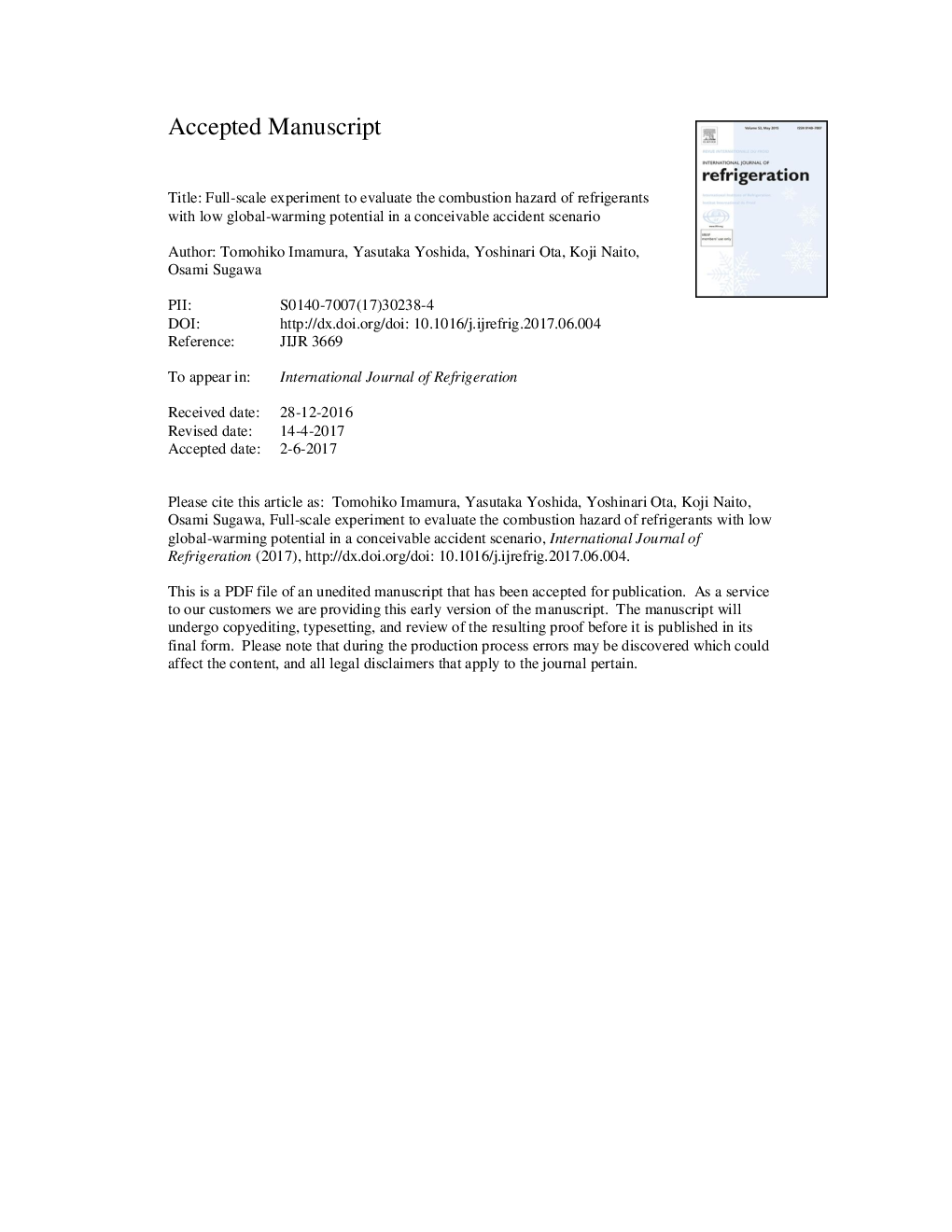| Article ID | Journal | Published Year | Pages | File Type |
|---|---|---|---|---|
| 5017021 | International Journal of Refrigeration | 2017 | 32 Pages |
Abstract
A full-scale experiment based on a realistic foreseeable leak accident scenario was conducted with two refrigerants with low global-warming potential (GWP). The assumed accident scenario was that of the leakage of low-GWP refrigerant from a variable-refrigerant-flow air-conditioning system into a general narrow karaoke space, with an open flame present in the region where the low-GWP refrigerant accumulated. Even in the absence of mechanical ventilation, neither ignition nor flame propagation occurred if the amount of “LFL equivalent”, that the calculated interior concentration corresponded to the lower flammable limit, was leaked and mixed sufficiently. Even when the leak amount was “UFL equivalent”, that the calculated interior concentration corresponded to the upper flammable limit, ignition and flame propagation could be prevented by means of a suitable ventilation system. The maximum pressure rise was 4-6âkPa. Finally, no transition from laminar combustion to turbulent combustion was observed.
Related Topics
Physical Sciences and Engineering
Engineering
Mechanical Engineering
Authors
Tomohiko Imamura, Yasutaka Yoshida, Yoshinari Ota, Koji Naito, Osami Sugawa,
